Located in the southern United States, Arkansas is a destination that stands out with its natural beauty, historical sites, and cultural richness. The state offers nature lovers numerous opportunities for exploration with its hot springs, national parks, caves, and mountains. Especially world-famous natural thermal springs such as Hot Springs National Park and preserved streams like the Buffalo National River are favorites of nature enthusiasts.
In addition, Arkansas is a region rich in historical and cultural heritage. Important monuments such as the Little Rock Central High School National Historic Site shed light on turning points in American history. The Crystal Bridges Museum of American Art attracts visitors interested in art. With its outdoor activities and cultural routes, Arkansas offers a versatile travel experience worth discovering.
1. Hot Springs National Park

Hot Springs National Park is one of the most famous natural and historical attractions in Arkansas. Designated as a national park in 1921, this area is actually considered one of the oldest protected areas in the United States. The natural hot springs located at the center of the park have been preferred for centuries by both locals and visitors for their healing properties. The historic bathhouse buildings in the area are lined up along an iconic walking route known as Bathhouse Row, and these architectural structures carry the elegant atmosphere of the 19th century to the present day.
Hot Springs National Park stands out not only with its thermal baths but also with its hiking trails and natural scenery. The various hiking routes within the park offer visitors the opportunity to explore the unique nature of the Ouachita Mountains. It also has highly suitable areas for activities such as hiking, cycling, and picnicking. Combining nature and history, Hot Springs National Park is one of the must-see places during trips to Arkansas.
2. Crater of Diamonds State Park
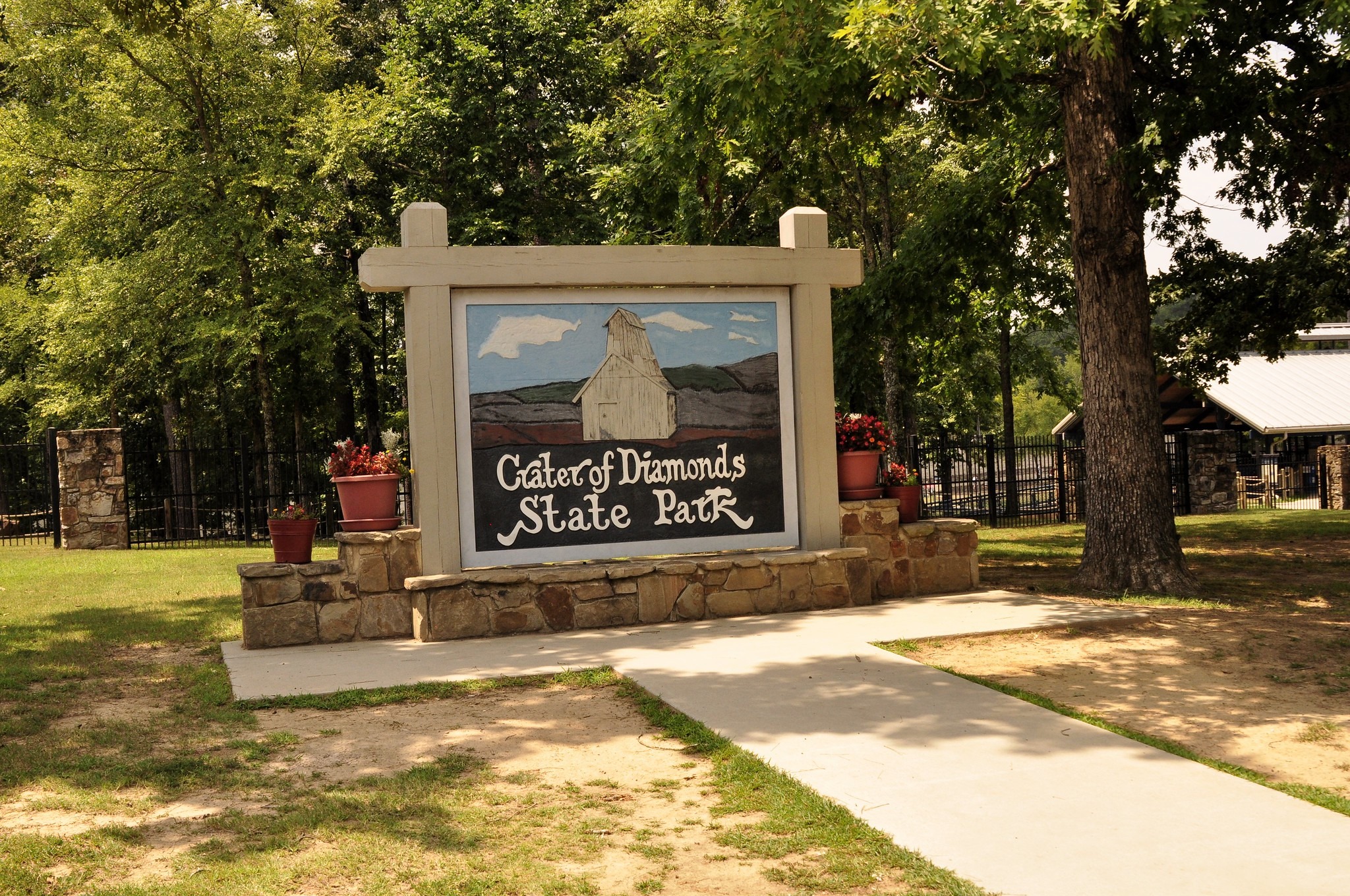
Crater of Diamonds State Park, located in the town of Murfreesboro, Arkansas, is known as the only diamond mine open to the public. Since being designated as a state park in 1972, visitors have had the chance to find an average of 1–2 diamonds per day in the approximately 37.5-acre excavation area. At the park, which offers an entrance fee and equipment rental, guests can take home any stones they dig up; whatever mineral is found belongs to its finder — thanks to this, more than 33,000 diamonds have been discovered.
The park not only offers diamond searching but also various nature and educational activities. At the Diamond Discovery Center, you can learn about diamonds and have your finds identified for free after digging. There are also various facilities for children and families, such as the Diamond Springs water park, campgrounds, in-town walking trails, and picnic areas. In the past, the largest diamond ever found in the United States, the 40.23-carat “Uncle Sam,” was unearthed here — this amazing achievement demonstrates the value of the area.
The park is a perfect stop for both geology enthusiasts and adventure-seeking families. Diamonds can be searched for using three methods: digging, sifting, or surface scanning, and other semiprecious stones such as amethyst, jasper, and quartz can also be found. The “finders keepers” policy gives visitors a unique thrill after the search.
3. Buffalo National River
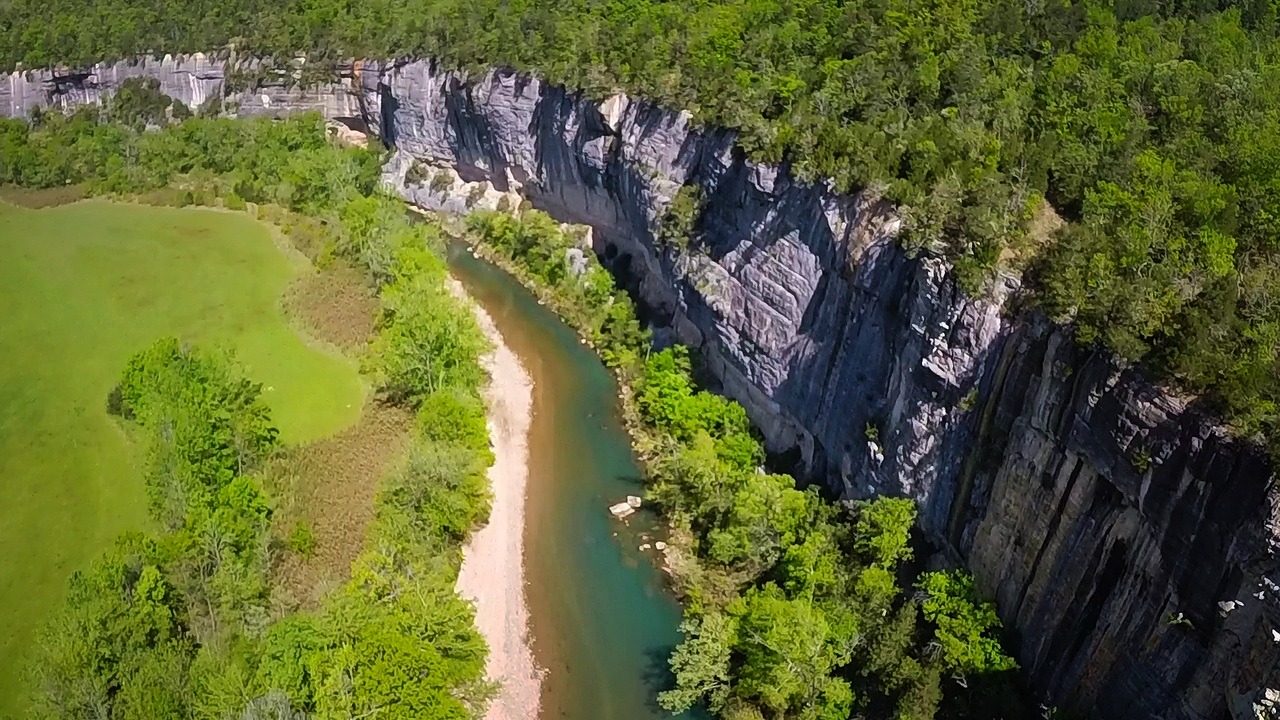
Buffalo National River, which in 1972 received the title of the first “National River” in the United States, is one of the rare rivers that has been preserved in its completely natural state. Flowing for about 135 miles through the northern regions of Arkansas, it starts from the Boston Mountains and extends to the White River. The sheer limestone and sandstone cliffs, over 150 feet high, together with the clear waters in shades of brown and green, offer unforgettable scenery. The area attracts crowds for water sports such as canoeing, kayaking, and swimming, as well as for hiking, camping, and fishing.
The areas within the park (upper/middle/lower districts) offer different levels of difficulty and natural diversity. In the upper district, there are rocky valleys, fast currents, and iconic natural wonders such as the Hemmed-In-Hollow waterfall, which is 209 ft (64 m) high. The area is also recognized as an “International Dark Sky Park,” providing an ideal dark environment for stargazing. With hiking routes such as the 35-mile-long Buffalo River Trail and numerous campgrounds, Buffalo River is a unique route for both adventure and nature photography enthusiasts.
4. Little Rock Central High School National Historic Site

Little Rock Central High School National Historic Site is one of the symbolic structures of the civil rights movement in Arkansas. Completed in 1927 in the Collegiate Gothic style, this school opened as one of the largest and most magnificent high schools of its time. However, what truly made this place remarkable was its role in the “Little Rock Crisis” of 1957. Despite the Supreme Court’s Brown v. Board of Education decision banning racial segregation in schools, eight Black students (the Little Rock Nine) were to be admitted to this school but faced violent white resistance and a provocative crowd. President Eisenhower’s intervention by sending federal troops to ensure these students could enter the school made it a turning point in American history.
Today, the school still functions as a high school and, with its National Historic Site status, is open to visitors not only as a historical monument but also as a living memory. Ranger-led guided tours are offered for students and adults; opposite the school there are impressive stops such as the modern visitor center, the “Little Rock Nine” memorial garden, and the old Magnolia gas station. Visitors can explore exhibitions, watch a film, and learn in depth about the story of this rooted school on a walking tour. This experience allows you to feel the history of the struggle for civil rights and the pursuit of equality down to your bones.
5. Mount Magazine State Park
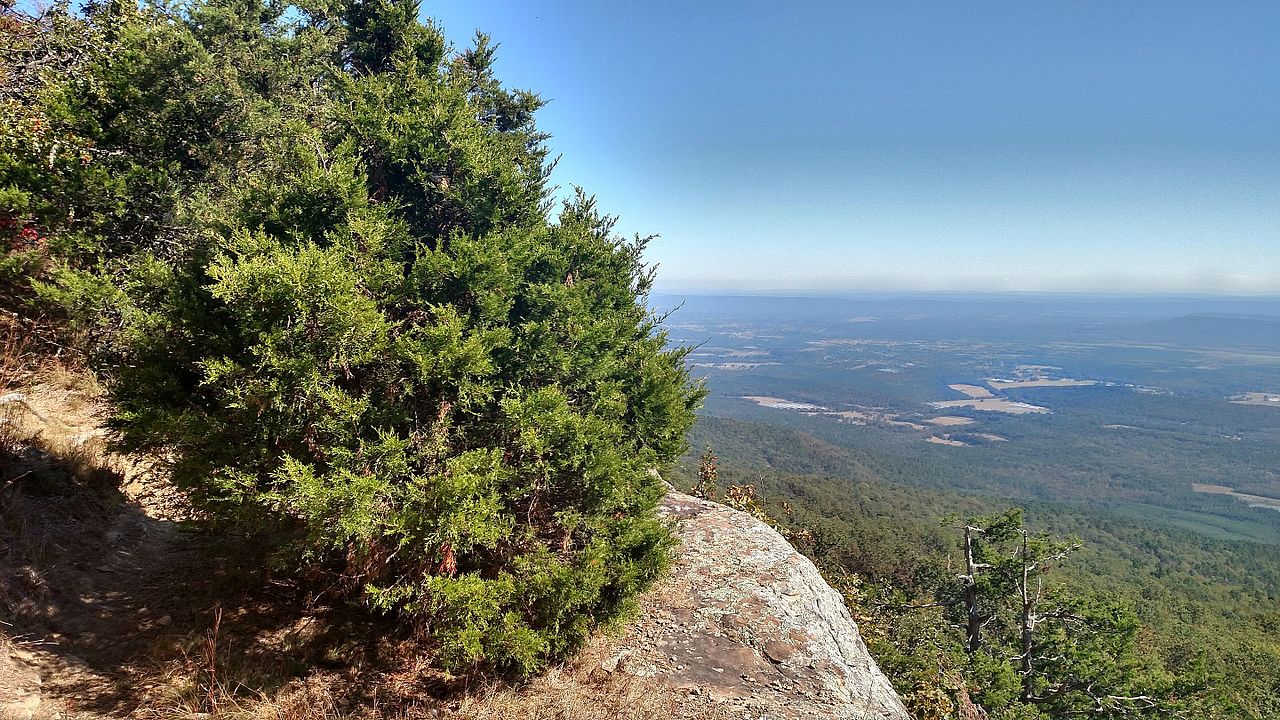
Mount Magazine State Park stands out with its elevation of 2,753 feet (≈839 m), the highest point in Arkansas, and offers magnificent views of the state. This plateau-shaped mountain is a natural paradise with its 2,200 acres of protected area combining different habitat features. In summer, it is about 10–15 °F (≈6–8 °C) cooler than the valleys and serves as a gathering spot, while its commanding viewpoints, especially from observation terraces like Cameron Bluff, are captivating.
It is also rich in activities: from hiking trails (such as Signal Hill, Benefield, Huckleberry, West/East Loop) and nature walks, to mountain biking and horseback riding, to technical climbing and rappelling, it offers many options. It is also one of the rare hang-gliding areas in the state. Additionally, thanks to its rich vegetation, it is home to 94 butterfly species and is known for its extraordinary biological diversity; rare species such as the Diana fritillary can be observed.
In addition to these natural beauties, it offers visitors fully equipped accommodation facilities: a mountain lodge with 60 rooms, a restaurant, swimming pool, fitness center, and 13 scenic cabins. There are also campgrounds with 18 sites offering water, electricity, and sewer hookups, as well as general bath and shower facilities. Guests can stay at the lodge or cabins for an enjoyable weekend or opt for camping for a more adventurous experience.
6. Ozark National Forest
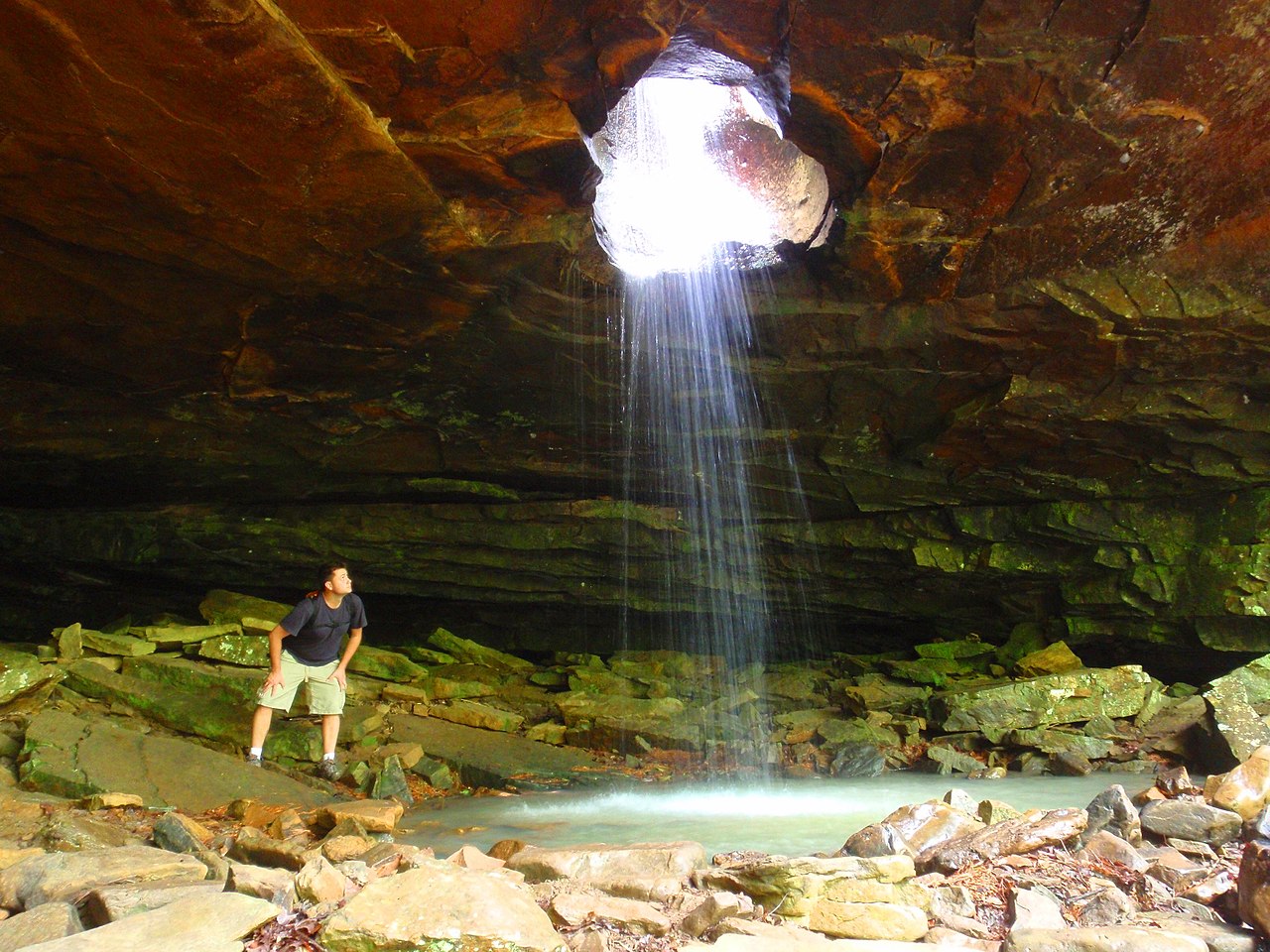
Ozark National Forest is a unique nature conservation area covering a vast 1.2 million acres in northwestern Arkansas. Declared a national forest in 1908 by Theodore Roosevelt, this area is home to important natural landmarks such as Mount Magazine and Blanchard Springs Caverns. The forest offers rich biodiversity with around 500 tree species; it features a habitat structure adorned with rural oak, hawthorn, and alder trees, and hosts diverse wildlife.
Hosting various outdoor activities throughout the year, Ozark National Forest provides opportunities for more than 395 miles of hiking trails, numerous equestrian caravan routes (for example, the 80-mile-long Sylamore Trail), and popular activities such as fishing, hunting, canoeing, and mountain biking. Visitors can enjoy camping, nature walks, and picnicking at 23 campgrounds and swimming areas, in addition to exploring stunning natural beauties like Pedestal Rocks, Alum Cove Natural Bridge, and Blanchard Springs Caverns. Especially drives along the Sylamore Scenic Byway are captivating for those who want to discover lesser-known natural formations such as canyons and cave entrances.
7. Blanchard Springs Caverns
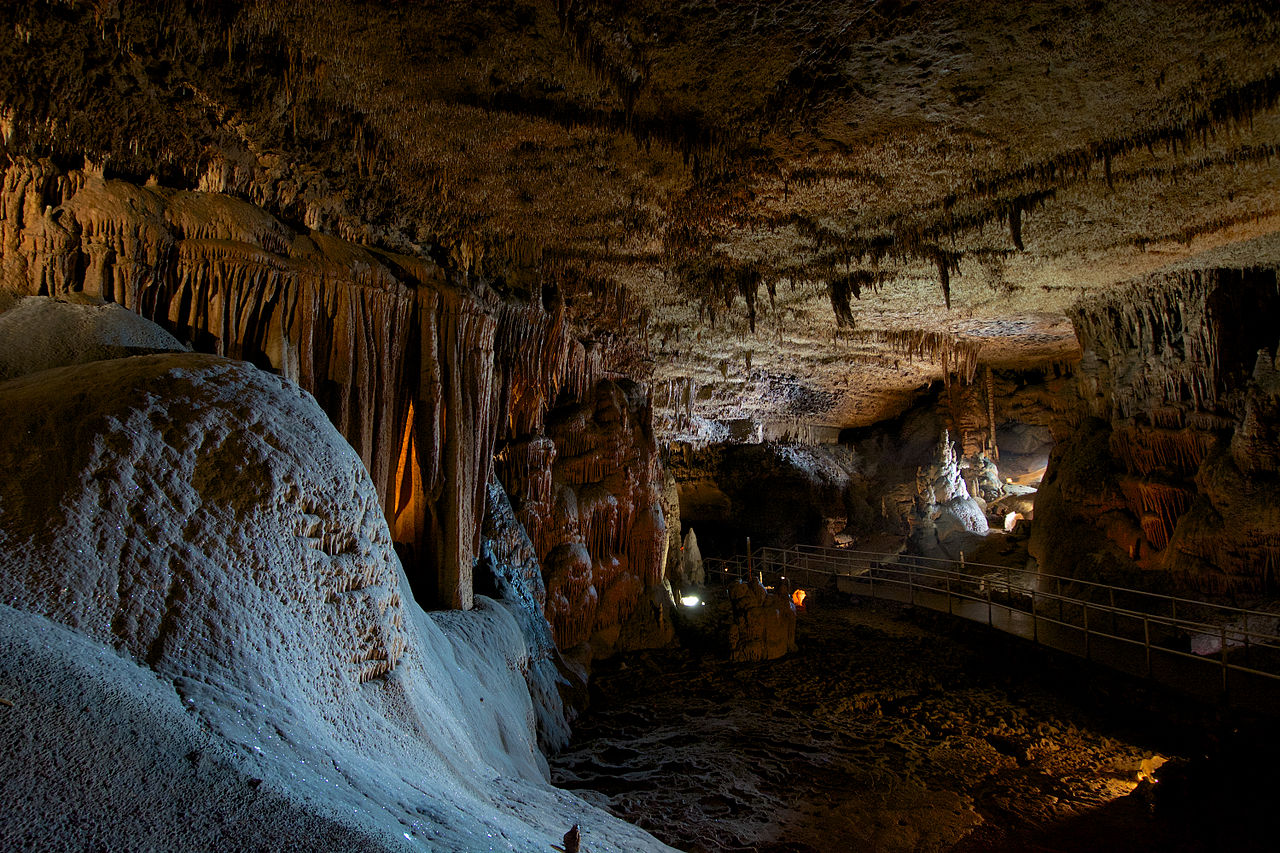
Blanchard Springs Caverns is an impressive underground cave system located within the Ozark–St. Francis National Forest in northern Arkansas, near Mountain View in Stone County. This three-layered cave, starting at a depth of about 200 feet (≈ 60 meters), was opened to the public in 1973 and is known as a “living cave” — because its stalactites, stalagmites, columns, and flowstone formations continue to grow with dripping water. Guided tours are regularly offered to visitors: the Dripstone Trail for easy walking, the more challenging and stair-filled Discovery Trail, and the adventurous Wild Cave Tour.
Outside of cave tours, the area also offers activities such as camping, hiking, cycling, fishing, and swimming. Especially Mirror Lake, formed by the water emerging from the cave mouth, is an attraction for nature photographers and those seeking relaxation. In addition, the visitor center provides facilities such as a gift shop, a short informational film, educational exhibits, and a café. With a constant interior temperature of 58 °F (about 14 °C) year-round, it offers a refreshing break even during the summer heat.
In summary, Blanchard Springs Caverns is a unique destination offering guided walking tours, natural lakes, campgrounds, and rich ecological life for visitors who want to see underground natural artworks, seek adventure, or rest in nature.
8. Petit Jean State Park
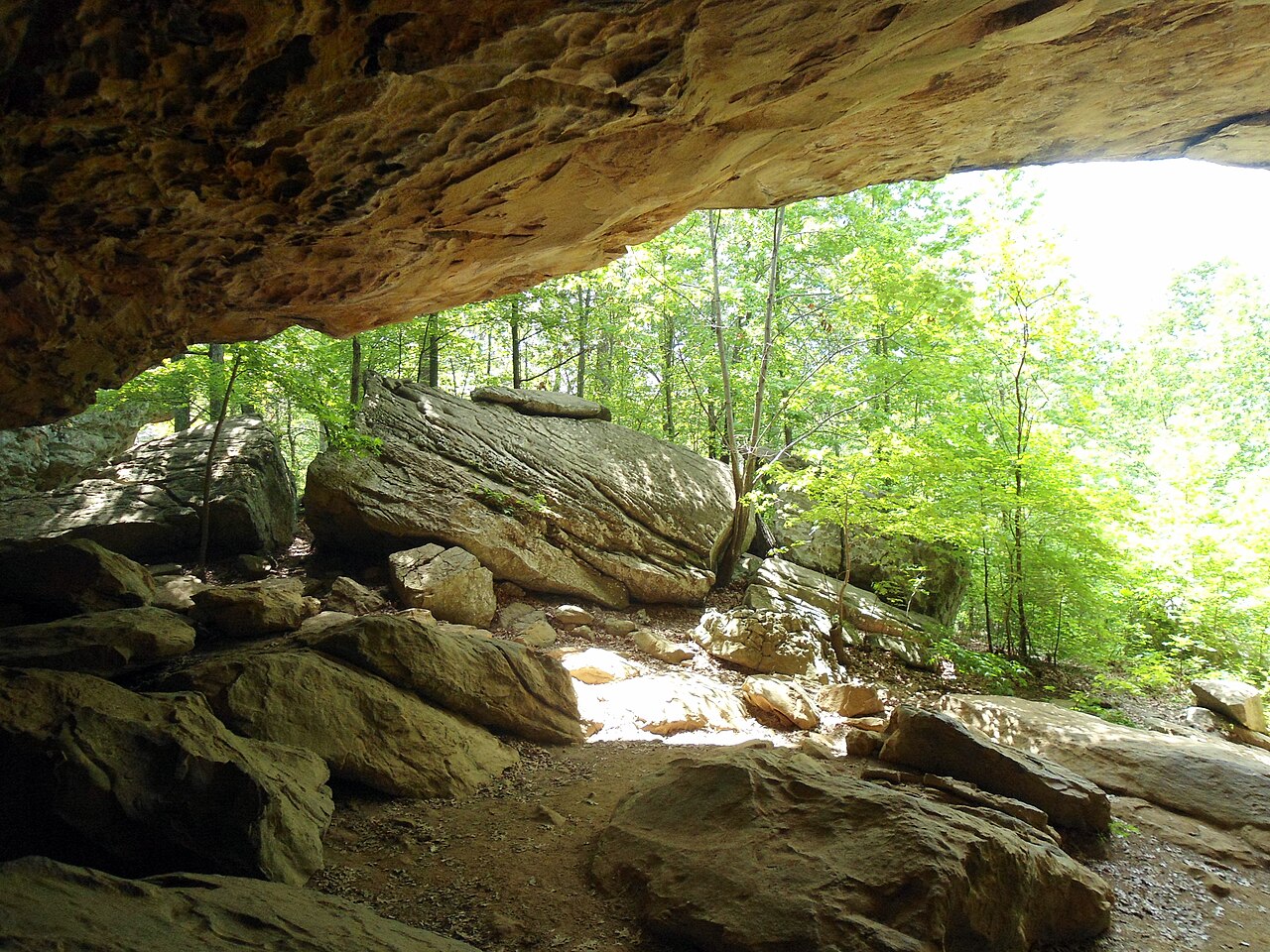
Petit Jean State Park is Arkansas’s oldest (1923) and one of its most enchanting state parks. Established on plateaus each over 1,000 feet (≈305 m) high, this park combines history, legends, and natural beauty. It takes its name from the legend of Adrienne Dumont, a woman from the 1700s who secretly followed her fiancé and was known by the nickname Little John (Petit Jean). Due to health problems, she died on the mountain and was buried there, and today her grave overlooks a panoramic view of the Arkansas River — this legend adds emotional depth to the park that touches visitors.
The park is famous not only for its legend but also for its geological richness, which includes highlights such as Cedar Falls, 1,000-year-old Native American petroglyphs in Rock House Cave, natural bridges, and rock formations. Especially along the Cedar Falls Trail, Canyon Trail, and Seven Hollows paths, it offers visitors unforgettable nature walks.
With Mather Lodge and campgrounds, the park provides accommodation options for every visitor; the lodge, cabins, yurts, and lakeside campsites allow for an unforgettable nature experience. At the boathouse on Lake Bailey, you can rent a boat, canoe, or pedal boat; families can also spend time on sports and game areas ranging from tennis courts to a softball field. Additionally, historic structures built with CCC (Civilian Conservation Corps) architecture — such as pond dams, Davies Bridge, and wooden carrier structures — add both functional and aesthetic value to the park.
With its legendary story as well as its natural and historical assets, Petit Jean State Park offers an unforgettable experience across a wide range, from nature walks to geological explorations, from accommodations to family activities.
9. Garvan Woodland Gardens

Garvan Woodland Gardens is a captivating 210-acre botanical garden nestled on the shores of Lake Hamilton southwest of Hot Springs. Affiliated with the Fay Jones School of Architecture at the University of Arkansas, this garden was opened to the public thanks to the donation of Verna Cook Garvan in 1985. In addition to its photogenic natural setting, it features striking architectural elements such as open-air structures designed by E. Fay Jones and Maurice Jennings, including the Verna Cook Garvan Pavilion built with red cedar wood. The garden cultivates hundreds of plant species—among them 160 varieties of azaleas, as well as camellias and Japanese maples—that enliven it through all four seasons.
Offering visitors more than five miles of walking trails to explore, the garden also features activity areas such as the stream garden (Pine Wind Garden), a bonsai collection, a model train garden, and a treehouse for children (Evans Children’s Adventure Garden). Additionally, photogenic bridges, nature-integrated resting spots, and seasonal attractions such as the Holiday Lights event with five million lights during Christmas draw guests. With ADA-accessible paths and a dog-friendly environment, Garvan Woodland Gardens is a peaceful nature retreat blended with architecture, landscaping, botany, and visual aesthetics.
10. Thorncrown Chapel
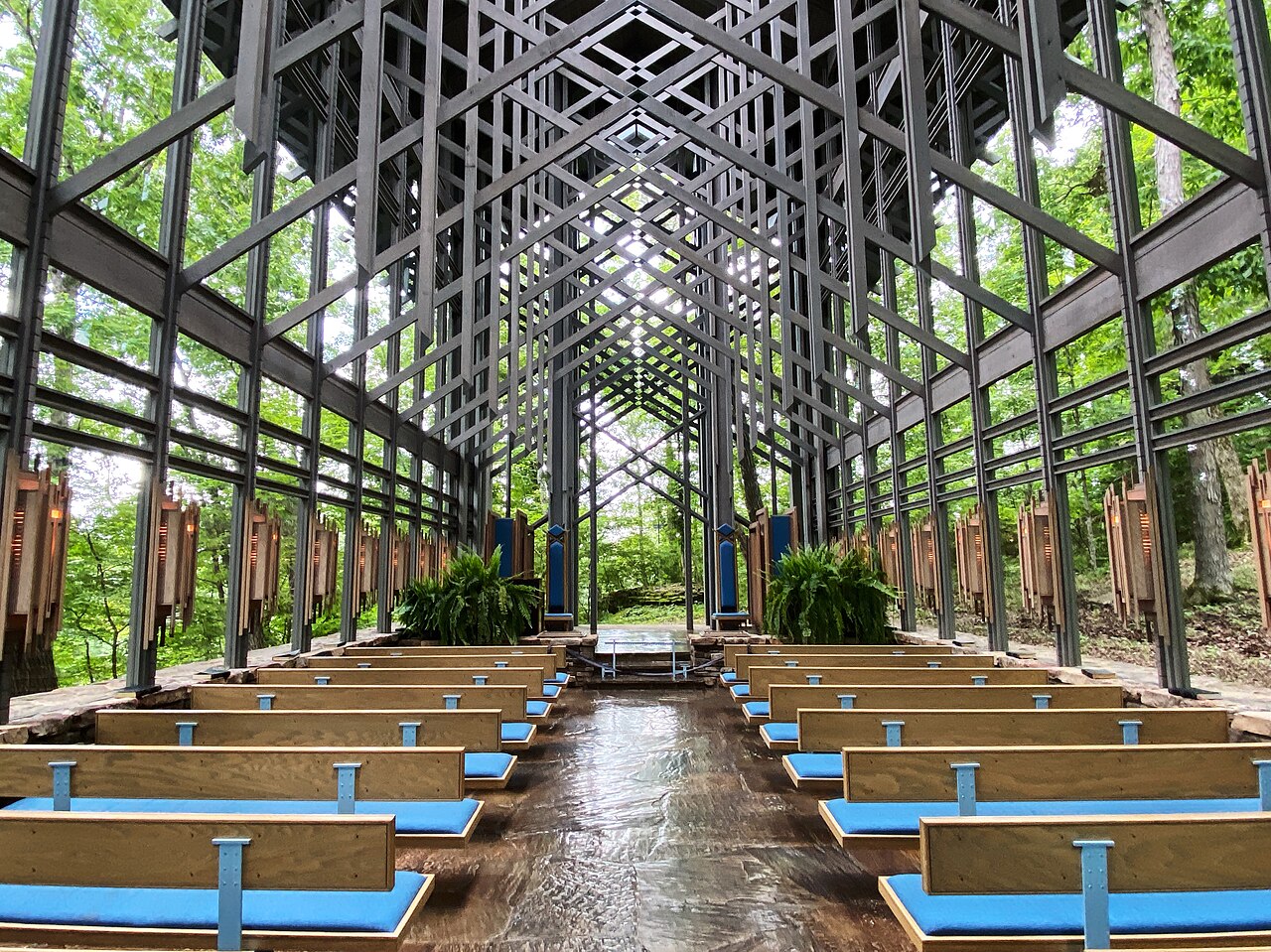
Thorncrown Chapel is a captivating glass and wood structure located within the Ozark Forests near Eureka Springs. It was designed in 1980 by American architect E. Fay Jones. Approximately 14.6 m high, 18.3 m long, and 7.3 m wide, this structure has over 560 m² of glass surface thanks to its 425 windows. Its design was inspired by the Gothic Sainte-Chapelle in Paris; it was built in an “Ozark Gothic” style to make visitors feel as if nature is inside. All of the structural elements of the building were transported from the forested area and planned to preserve harmony with the natural surroundings.
This magnificent architectural work offers not only aesthetic but also spiritual inspiration. Built to realize the dream of Jim Reed, a retired teacher who wanted to create a place for meditation and prayer in the woods, the chapel has received many architectural awards: the AIA National Honor Award in 1981, and the AIA “Twenty-Five Year Award” in 2006. In 2000, it was also included in the National Register of Historic Places by the Noah Committee. Today, it attracts more than 100,000 visitors annually, is open free of charge, and stands out as a nature-integrated sanctuary also preferred for weddings and worship.
These two paragraphs present Thorncrown Chapel’s architectural features along with its cultural and spiritual significance in an impressive way.
11. Devil’s Den State Park
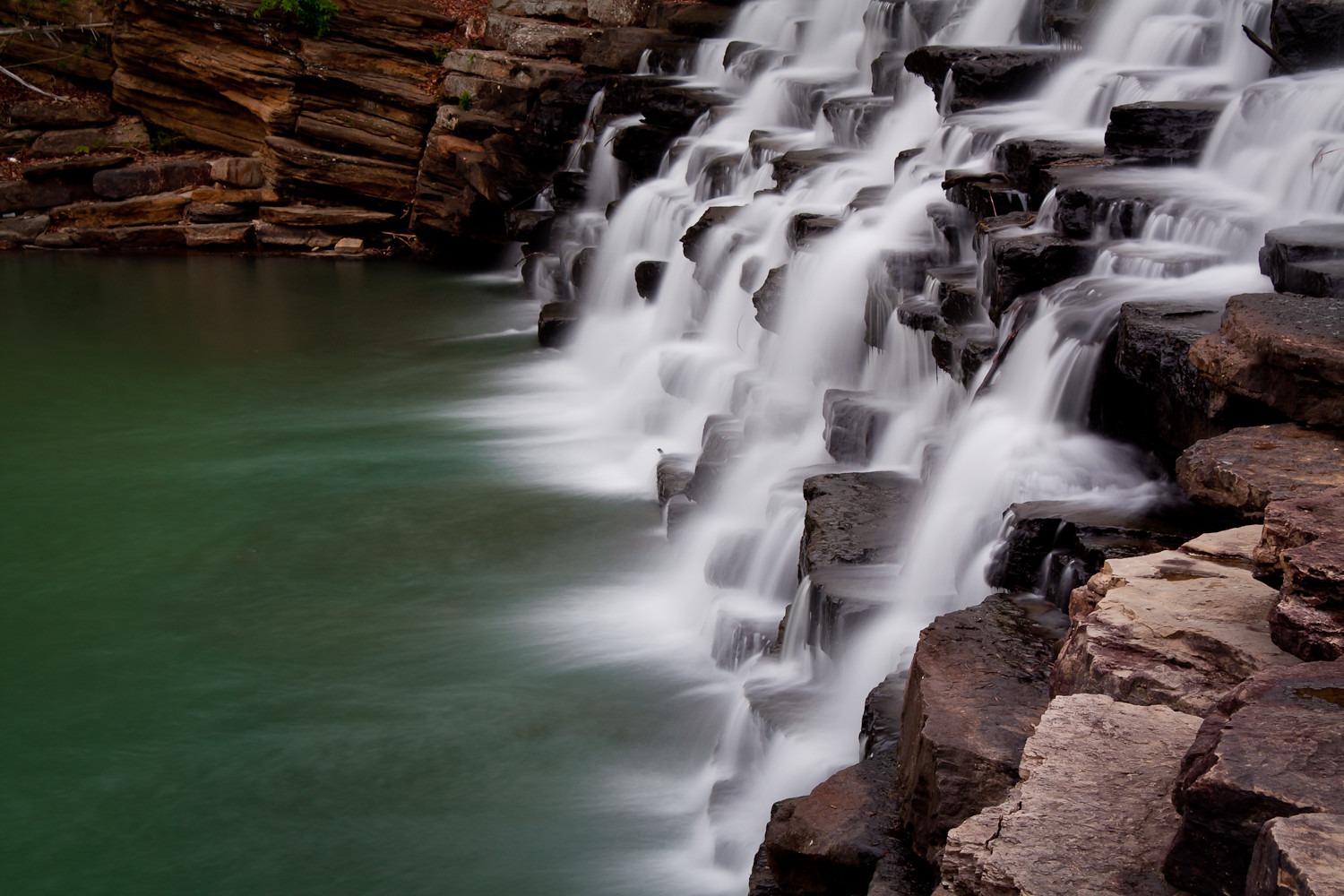
Devil’s Den State Park is a natural wonder of approximately 2,500 acres located in the Lee Creek Valley in northwestern Arkansas. Developed in 1933 by the Civilian Conservation Corps (CCC), the park is considered one of the best-preserved CCC works in the country. The area features unique canyons, rock outcrops, cave systems, and about 60 crevice caves formed by Pennsylvanian sandstone — among them the most notable is the “Devil’s Ice Box” cave, known for its cool air outflow. This unique geography offers a fascinating atmosphere for both geology enthusiasts and nature lovers.
Devil’s Den is extremely rich in nature activities, hosting more than 64 miles of hiking, mountain biking, and horseback motorcycle trails; additionally, the 8-acre artificial “Lake Devil” provides opportunities for canoeing, pedal boating, and fishing. Among the trails suitable for all skill levels, the popular Yellow Rock Trail (with a 300 ft elevation gain) offers magnificent valley views, while routes such as Fossil Flats provide a chance to encounter fish fossils. Visitors can find a wide range of accommodation options with 17 fully equipped cabins, 135 campsites (including ARA and primitive options), a swimming pool, and a horse camp. In addition, events such as the Ozark Mountain Bike Festival held in the spring provide extra enjoyment for nature enthusiasts and adventure seekers.
With these features, Devil’s Den State Park promises an unforgettable experience for people of all ages and interests, with its outdoor activities like hiking, biking, camping, and cave exploration, as well as CCC architecture intertwined with history.
12. Lake Ouachita State Park
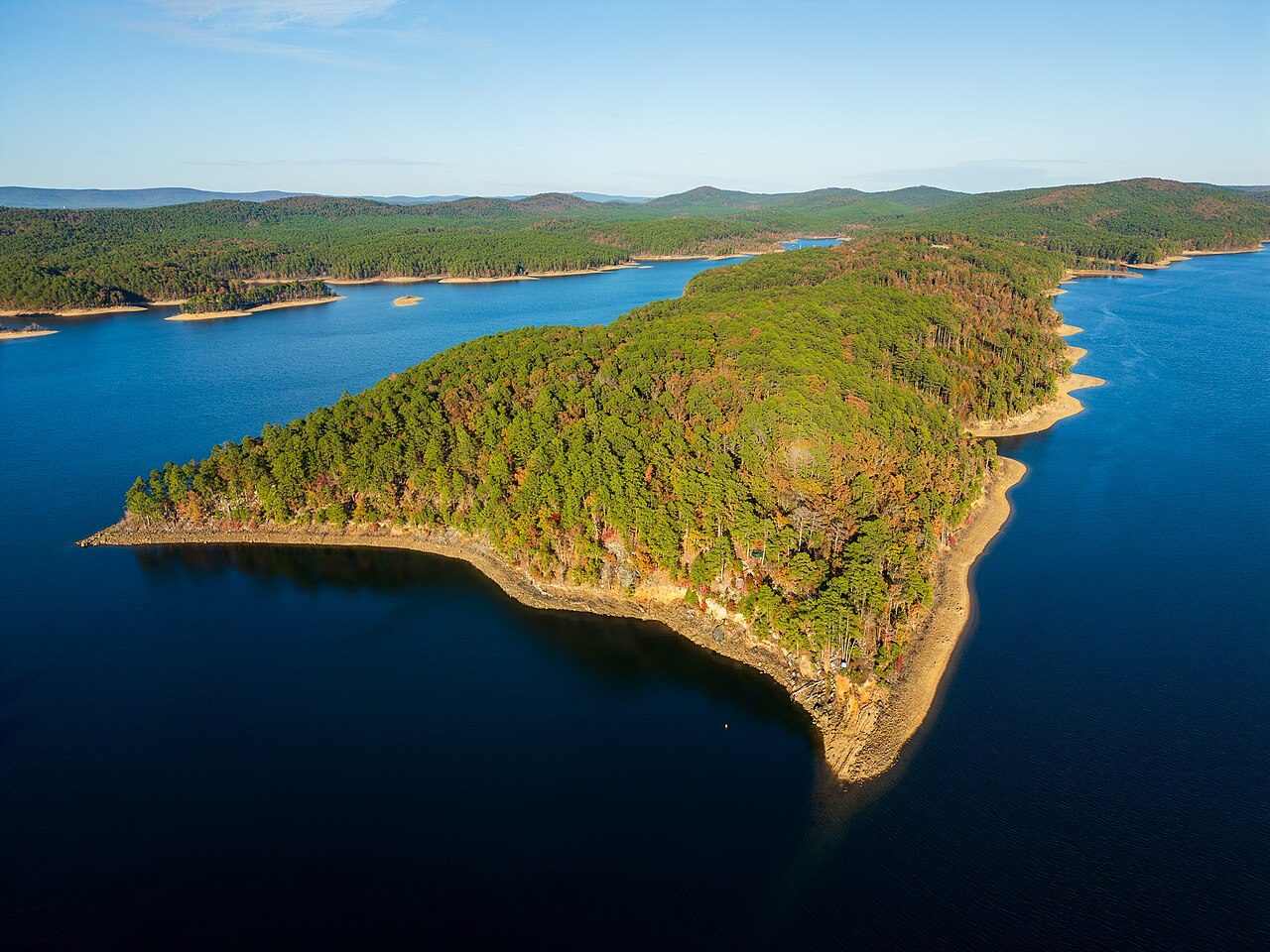
Lake Ouachita State Park is a 360-acre state park located at the eastern end of Lake Ouachita, Arkansas’s largest man-made lake, near Mountain Pine. Established in 1953, the park was opened to visitors in 1955. The 40,000-acre lake, surrounded by rural forests, stands out with its crystal-clear waters and nearly 690 miles of shoreline. Within the park are a visitor center, restaurant, fully equipped marina, swimming areas, hiking trails, boat ramps, and campgrounds. The area also includes former mineral springs such as Three Sisters Springs within its boundaries.
Lake Ouachita is quite rich in activities, offering ideal conditions for water sports such as swimming, boating, canoeing-kayaking, water skiing, diving, and stream fishing. The marina provides boat and equipment rentals and is connected to nature trails such as Caddo Bend and Dogwood. It is easily accessible by jeep and is open year-round; there are full-hookup campsites, cabins, a visitor center, and guided ranger programs available. The park, which offers a nature escape at UNESCO standards, features an ecosystem interesting to diving enthusiasts with jellyfish and freshwater sponges.
13. Crystal Bridges Museum of American Art
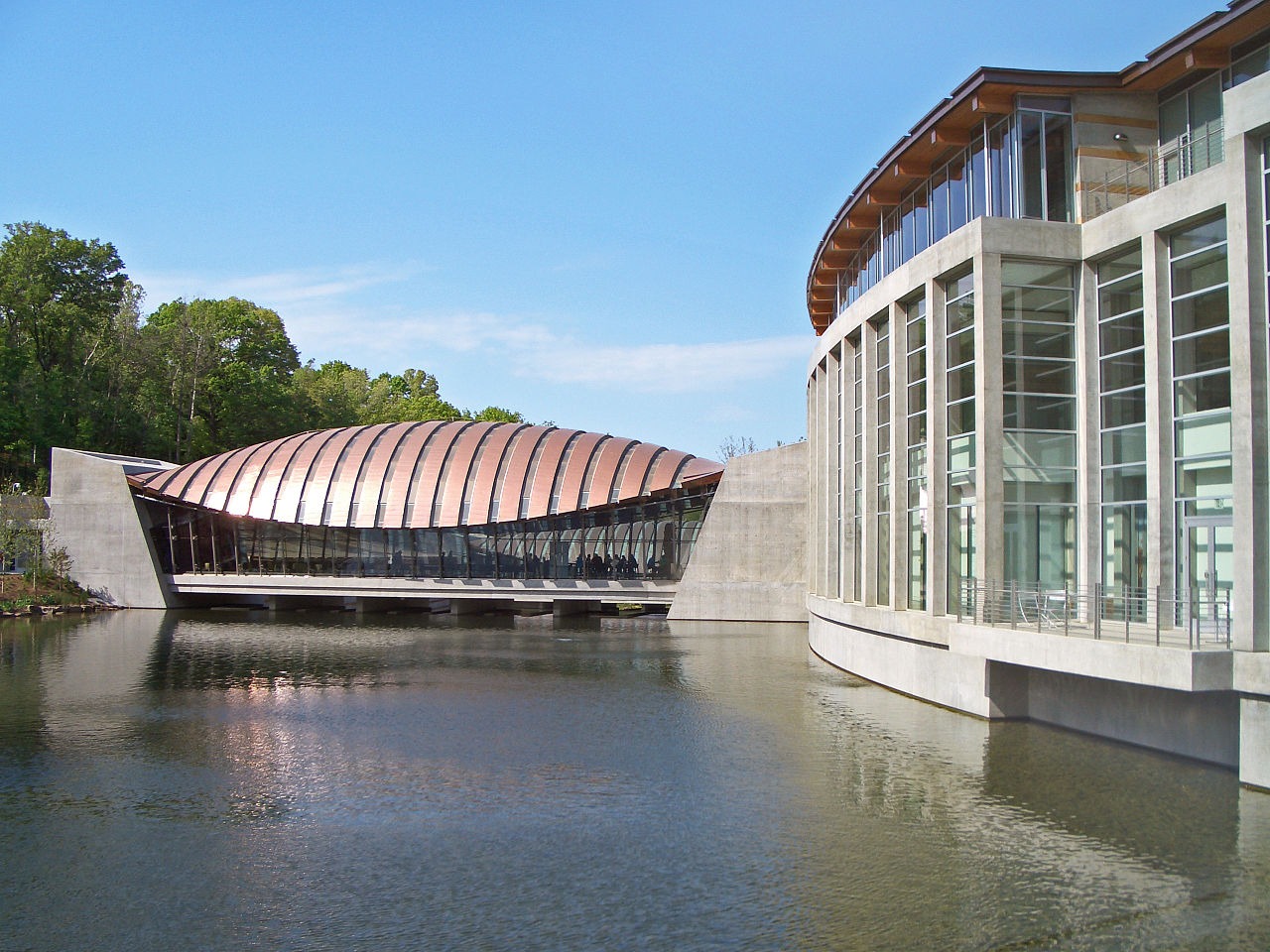
Crystal Bridges Museum of American Art was founded in the city of Bentonville, Arkansas, by Alice Walton, the daughter of the founder of Walmart. Opened on November 11, 2011, the museum was designed by renowned architect Moshe Safdie in an integrated manner along a lakeshore within the Ozark forests. It offers visitors permanent free admission. Spanning approximately 120–134 acres of natural area, the facility embraces art, architecture, and nature together with 35,000 m² of gallery space indoors, large halls, a library, and meeting and educational spaces.
The permanent collection presents American art along a timeline of five centuries, from the late 18th century to the present, featuring prominent works by names from Gilbert Stuart to Norman Rockwell, Andy Warhol, Jackson Pollock, and Georgia O’Keeffe. In addition to its indoor exhibitions, the outdoor sculpture trail, forest walking paths, and structures such as the Bachman–Wilson House designed by Frank Lloyd Wright offer visitors a visually and spatially rich experience.
Overall, Crystal Bridges is considered a must-see cultural destination in Arkansas with its mission of making art “accessible to everyone,” its architectural quality, nature-integrated structure, rich collection composition, and spatial diversity.
14. Eureka Springs Historic District
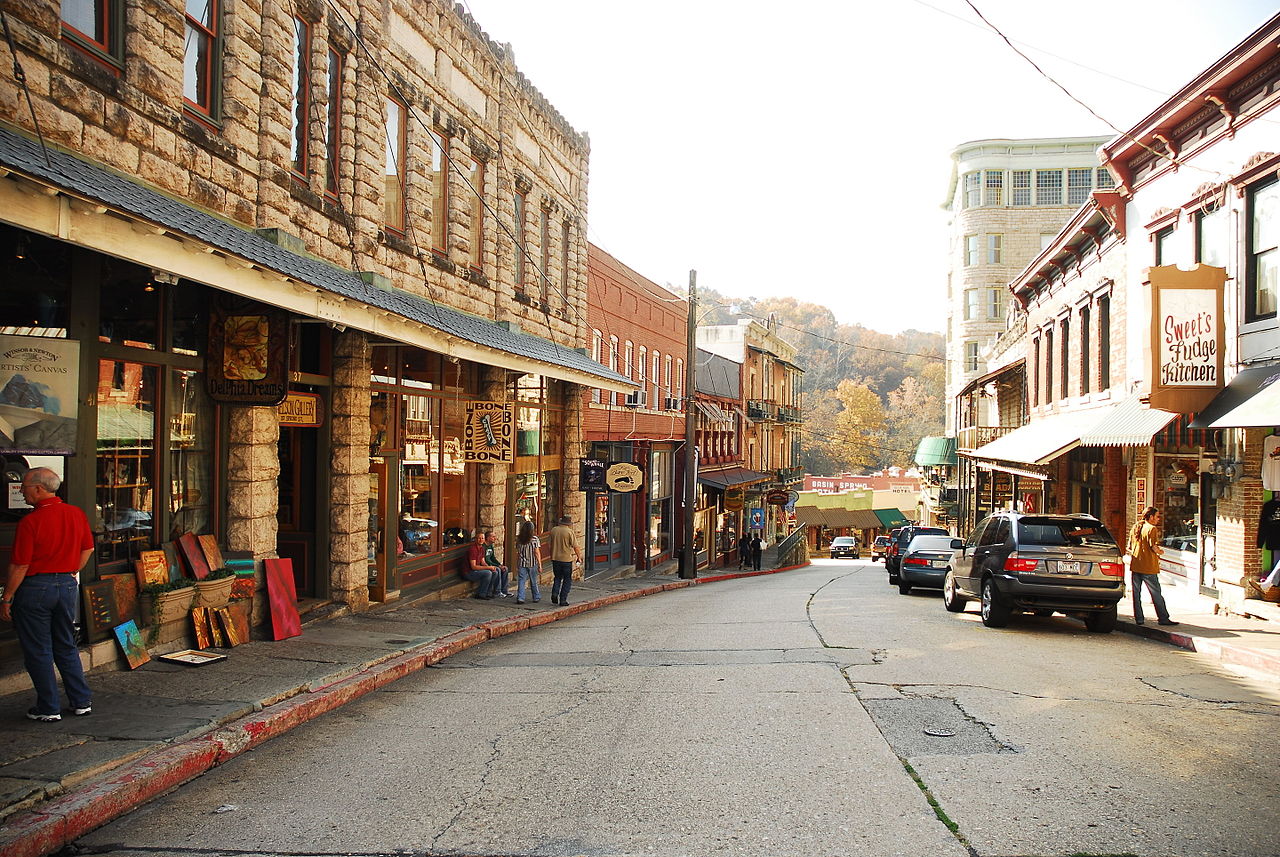
Eureka Springs Historic District is a large area of 1,250 acres located on the cool slopes of the Ozark Mountains in northwestern Arkansas. Added to the National Register of Historic Places in 1970, this area developed intensely between 1880 and 1910 and contains Late Victorian architecture such as Queen Anne, Second Empire, Romanesque, and Italian Revival. With approximately 967 structures, Eureka Springs offers one of the best-preserved Victorian townscapes in the central United States — including narrow stair-stepped streets and cobblestone roads.
This historic district is filled with shopping stores, art galleries, boutique hotels, spas, mineral springs, and restaurants. Especially Basin Spring Park, marking the town’s founding spot, provides areas for relaxation and social life around a natural hot spring. Walking tours and historic tram rides through the pedestrian-friendly center combine with landmarks such as the Crescent Hotel and the Eureka Springs Historical Museum, giving visitors both an architectural and cultural journey through time.
Eureka Springs Historic District attracts visitors with its enchanting architecture, natural hot springs, art, and vibrant social atmosphere. This unique setting draws around one million visitors annually, further confirming its nickname of “Little Switzerland.”
15. Mammoth Spring State Park
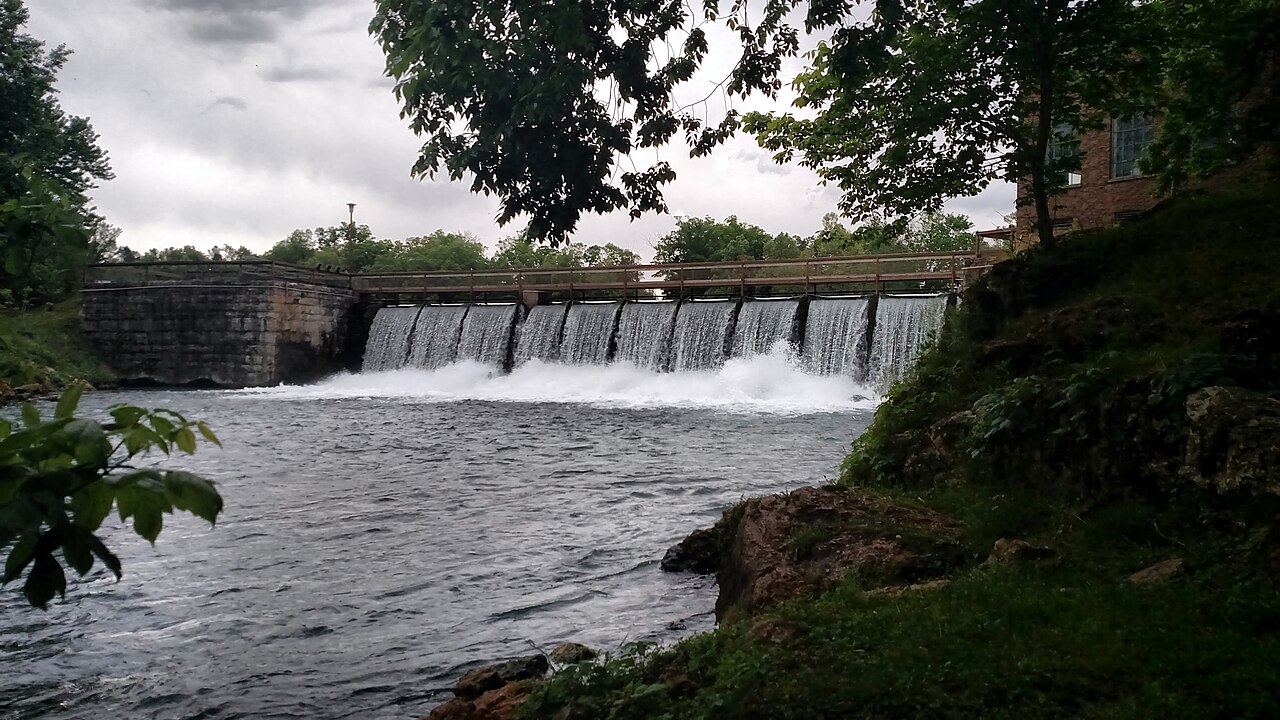
Mammoth Spring State Park is a 62.5-acre park located in Fulton County in northern Arkansas, protecting the largest natural spring in the state. The flow of the spring reaches approximately 9,780,000 gallons per hour, creating a 10-acre lake that flows into the Spring River; this river, with its cold water year-round, is suitable for trout fishing and water sports. In addition, the park holds great natural and historical significance with its 1887 stone dam, a former hydroelectric facility, and the restored 1886 Frisco railroad depot.
Popular activities among visitors include walking along the lake, picnicking, canoe and pedal boat rentals; the old train depot used as a small museum and a restored caboose also await exploration in the park. Informative tours of the dam and former power plant shed light on the local industrial history. The park also offers comprehensive facilities such as an Arkansas Welcome Center, children’s playground, picnic areas, and bicycle and walking trails.
With these features, Mammoth Spring State Park offers a unique experience appealing to visitors seeking nature- and water-based activities as well as those interested in the industrial past of the region.
16. Toltec Mounds Archeological State Park

Toltec Mounds (Plum Bayou Mounds) Archeological State Park is an extensive platform mound complex of temple-town structures from the Late Woodland period belonging to the Plum Bayou culture, dating from the 7th to 11th centuries, located near Scott, Arkansas. Originally, 18 mounds were constructed under entirely new vegetation, and today three large mounds have been fully preserved. The area is a major site covering 100 acres, housing some of the tallest and rarest Indian mounds in Arkansas, and was added to the National Register of Historic Places in 1978. Archaeology enthusiasts today can learn about the site through artifacts displayed in the visitor center and join their own self-guided discovery tours along the Knapp and Plum Bayou walking trails, exploring the mounds, waterfront areas, and interpretive panels.
This park is significant not only historically but also as a living archaeological research center. Excavations carried out since the 1970s by the Arkansas Archeological Research Station have shown that the mounds were used as ceremonial and social gathering places. Visitors can find detailed explanations of the astronomical alignments of the mounds (equinoxes and solstices) and the religious-social life of the ancient Plum Bayou people on educational panels and at interpretation centers. Despite the loss of some mounds to modern farming practices, today the park serves both preservation and public access purposes; its surrounding boardwalks, cypress forests, and small ponds also allow nature lovers to enjoy a unique natural experience.
17. Pinnacle Mountain State Park
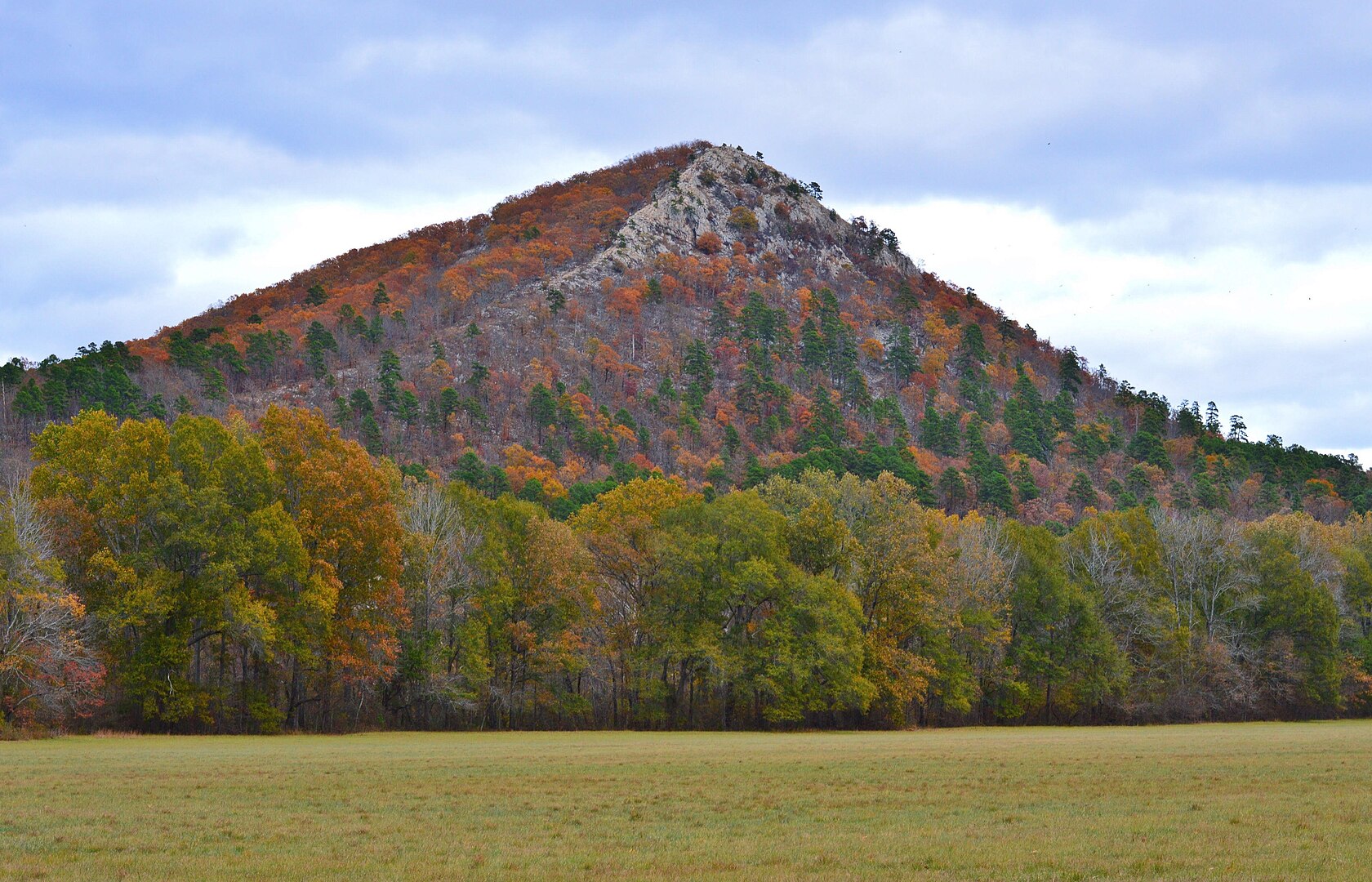
Pinnacle Mountain State Park is a 2,356-acre state park located in Pulaski County, just west of Little Rock. It takes its name from the iconic cone-shaped Pinnacle Mountain, which has an elevation of 1,011 ft (≈ 308 m). This peak rises along the eastern edge of Arkansas’s Ouachita Mountains and offers a unique view near the Maumelle rivers. Over time, with support from the state legislature and federal aid, it was turned into a protected area in the 1970s and officially gained park status in 1977.
The park offers activities appealing to nature and adventure enthusiasts, with hiking trails of various difficulty levels. The popular West Summit Trail (1.5 miles) and the longer but technically more challenging East Summit Trail (1.5 miles, requiring occasional rock climbing) reach the summit. Both routes to the top offer breathtaking panoramas. Additionally, the park contains the 71-acre Arkansas Arboretum, where the vegetation of the state’s six geographic regions is introduced along a 0.6-mile developed walking path that provides nature education for visitors. The newly opened Monument Trails mountain bike routes, 19 miles in length, appeal to both cyclists and hikers.
In addition to trails like the Rocky Valley Trail starting from the visitor center, there are the Kingfisher Trail, Base Trail, and the starting point of the Ouachita National Recreation Trail. Canoeing, picnicking, biking trips, and nature programs (ranger-led interpretation tours) are also available along the riverside. For anyone who wants to get close to nature at any time of day, enjoy the view of wide valleys from a mountain peak, and savor hiking, Pinnacle Mountain State Park is a wonderful outdoor experience with its central location.
18. White River (with fishing and nature activities)
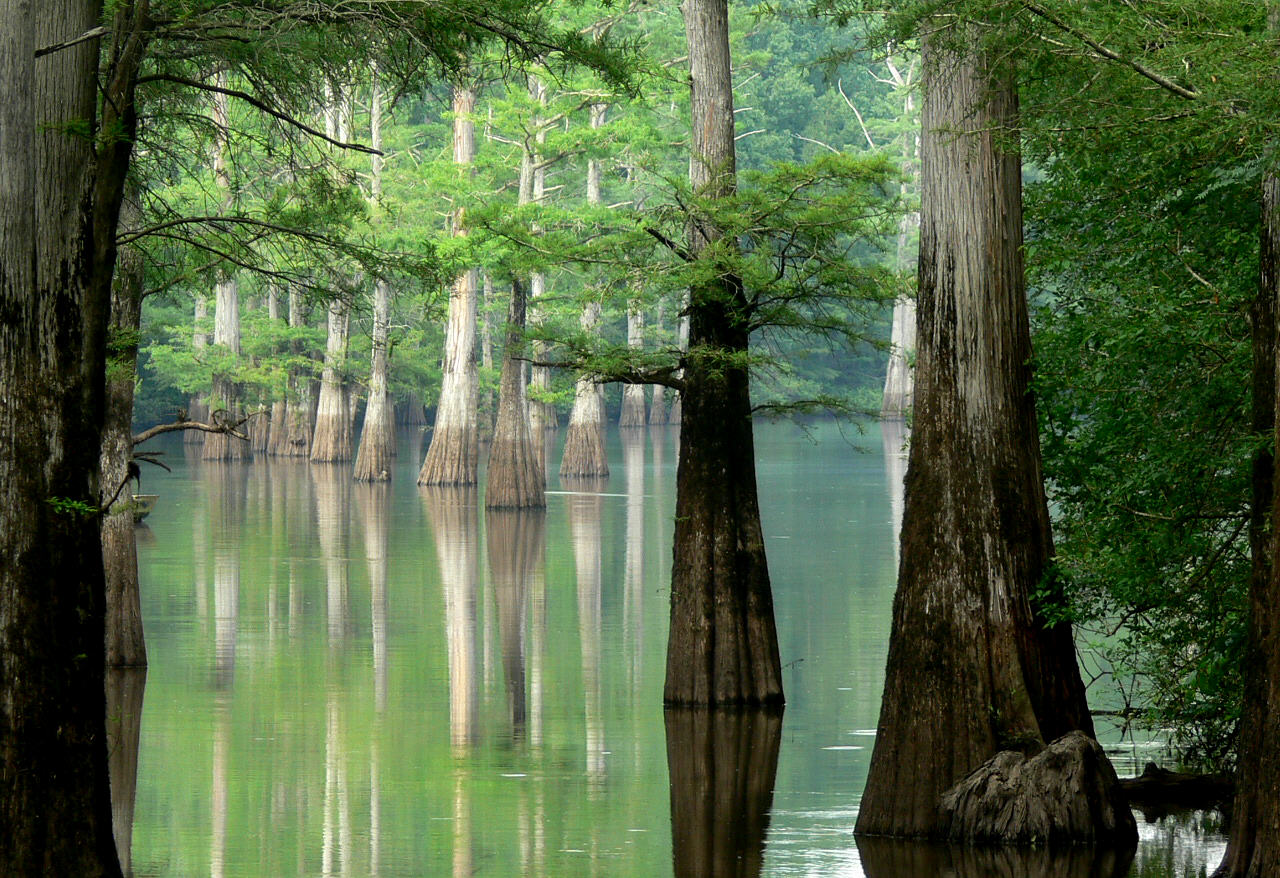
White River is a major waterway that begins in the foothills of the Ozark Mountains in northwestern Arkansas, shaped by the Bull Shoals and Norfork dams, and extends approximately 722 miles into Missouri. The Upper White River is especially known for its rainbow, brown, brook, and cutthroat trout and is considered a world-famous trout fishing destination. In the deltas and improved areas of Bull Shoals-White River State Park, anglers have the chance to catch large fish year-round through spin and fly-fishing.
White River is enriched not only by fishing but also by activities such as nature hiking, canoeing-kayaking, camping, and wildlife observation. Marinas and guided services are ideal for both beginners and experienced fishermen. Rugged canyons, forested valleys, and an abundance of fish species (bass, walleye, catfish, sunfish, trout) attract nature lovers. In addition, parks around the Bull Shoals and Norfork dams offer great opportunities for family outings with picnic and hiking trails.
19. Mount Nebo State Park
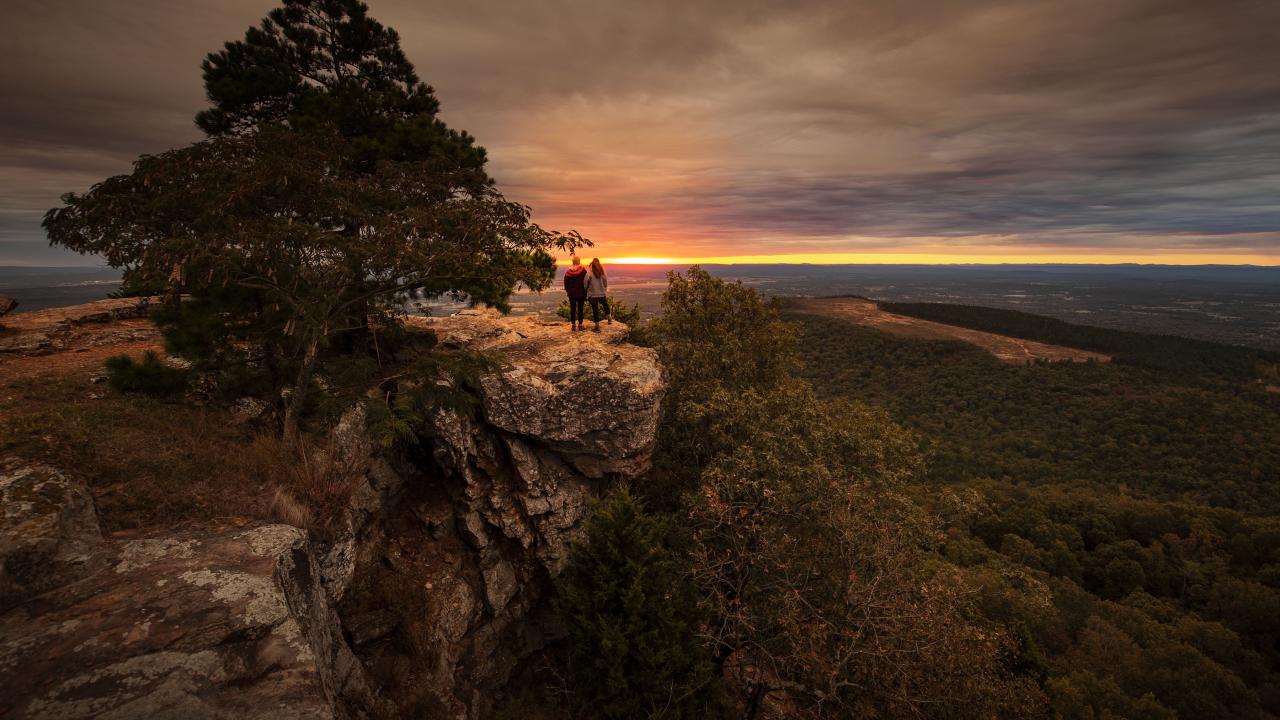
Mount Nebo State Park is located at the summit of Mount Nebo, with an elevation of 1,350 ft (≈ 412 m), about 45 minutes from Dardanelle in the Arkansas River Valley. Declared the state’s second state park in 1928, the area features a historic touch with cabins, pavilions, bridges, and hiking trails built by the Civilian Conservation Corps (CCC) in the 1930s. Visitors can hike on the Rim Trail, Bench Trail, and other paths offering views of the river valley and Lake Dardanelle; they can also experience adrenaline on the 25-mile-long Monument Trails mountain bike routes.
The park offers 15 historic CCC cabins, 34 campsites (24 Class B, 10 hike-in tent sites), and facilities such as a swimming pool, tennis courts, and a visitor center. In addition, there are opportunities for hang-gliding with magnificent sunrise and sunset views at points like Summit Point and Bench Overlook, and this area is located along the Trail of Tears National Historic Trail route. For anyone looking for nature hiking, biking, camping, or a peaceful escape, Mount Nebo State Park offers an impressive outdoor experience surrounded by historical heritage.
20. Arkansas Air and Military Museum (Fayetteville)
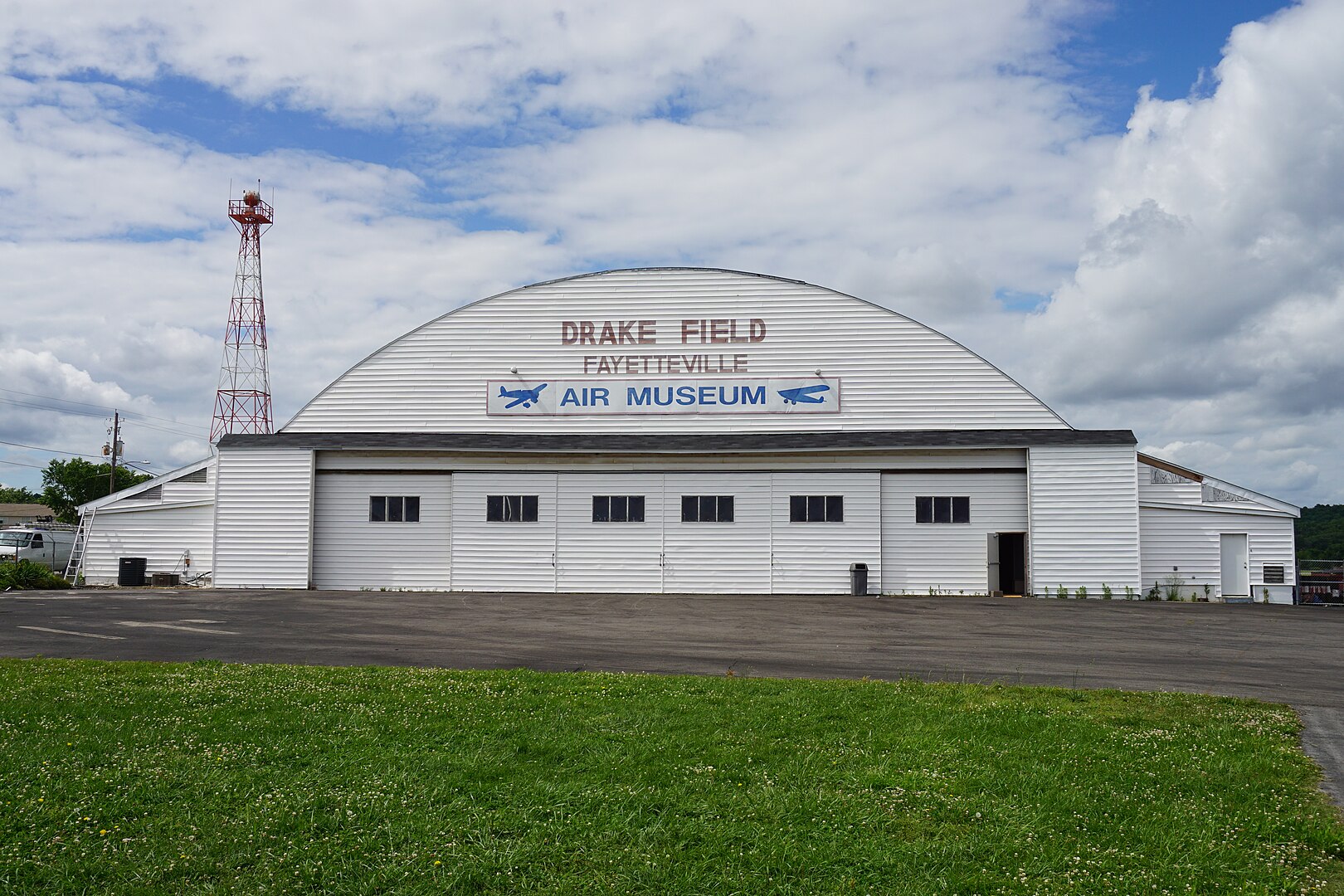
The Arkansas Air and Military Museum, located in Fayetteville, Arkansas, stands out as the state’s only aviation museum. Situated at Drake Field Airport in a historic wooden hangar dating back to the 1940s, this museum offers a comprehensive collection on Arkansas’s aviation and military history. The museum was established in 1986 as the Arkansas Air Museum and merged with the Ozark Military Museum in 2012 to adopt its current name.
The museum has a rich collection of more than 2,000 artifacts. Among the exhibits are racing aircraft from the 1920s and 1930s, military aircraft spanning from World War II to the Korean War, military vehicles, and various military memorabilia. Notable aircraft include the Bell AH-1S Cobra and UH-1H Huey helicopters, Douglas A-4 Skyhawk, and LTV A-7 Corsair II warplanes. Also on display are Sam Walton’s first aircraft, the Ercoupe 415C, and one of the world’s first aerobatic Learjets, the Learjet 23.
The museum is open from Tuesday to Saturday between 9:00 a.m. and 4:00 p.m., with admission fees of \$11 for adults, \$10 for seniors over 65 and military personnel, \$6 for children aged 6–16, and free for children under 5. There is also a group ticket option for families at \$26. Visitors presenting a SNAP, EBT, or WIC card are eligible for a discounted admission fee of \$2.50 per person.
If you are interested in aviation and military history, the Arkansas Air and Military Museum is a place worth visiting with its rich collection and historic atmosphere.
